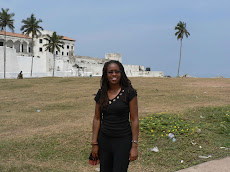
The young man pictured with the accordion recently won a youth talent competition here in Namibia. While the instrument seems to be a more contemporary element, the style of music he performed, along with the dancers and guitarist who are also pictured, are all parts of his traditional Riemvasmaaker culture. The photo was taken at a regional health education event last month where numerous local cultural groups performed.
About a week before the event, I was briefly introduced to the Riemvasmaaker culture by two colleagues that are members of the community. I also met the local chief. I am told that Riemvasmaakers have origin in various tribes, including Nama, Damara, Herero, and Xhosa; although, those of Xhosa origin are generally not found in Namibia.
About a week before the event, I was briefly introduced to the Riemvasmaaker culture by two colleagues that are members of the community. I also met the local chief. I am told that Riemvasmaakers have origin in various tribes, including Nama, Damara, Herero, and Xhosa; although, those of Xhosa origin are generally not found in Namibia.
They explained to me that they come from the Northern Cape province of South Africa, in a town named Riemvasmaak. The area in which they lived is known for its natural hot springs and beautiful red stony mountains. When the South African government adopted apartheid, the Riemvasmaakers were uprooted and forced to relocate to a remote part of Northwest Namibia (at that time, Namibia was formally called SouthWest Africa). Riemvasmaaker homes were burned and they were given no choice in their removal. Their land was then transformed into a military training base for the South African Defense Force.
Both of my colleagues remember the long, arduous, and sorrowful 1974 journey well. There were a few thousand members led by chiefs on trains, buses, and foot. They were sent and ended up in a remote village far from home with little access to conveniences and little resemblance to the land they left. The village is not very far from the town of Khorixas, in the Kunene Region, where I currently live.
After the fall of apartheid in 1993/1994, the new South African government initiated land restitution projects, closed the military base, and invited the Riemvasmaakers, the original residents, back to their land. Many returned, while others remained in their new environments because they’d established families and successful careers there. Meanwhile, there have reportedly been a number of cases of Riemvasmaaker injuries on active land mines that were set-up by the former military and not removed as promised prior to their re-occupation of the area.
Of course it is now up to me to learn more about this interesting, yet unfortunate history and resilient people.






.jpg)
great information
ReplyDeleteWhat a journey
ReplyDeleteMom